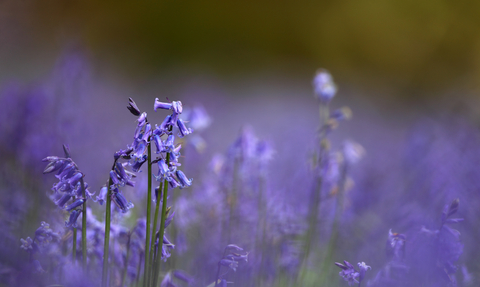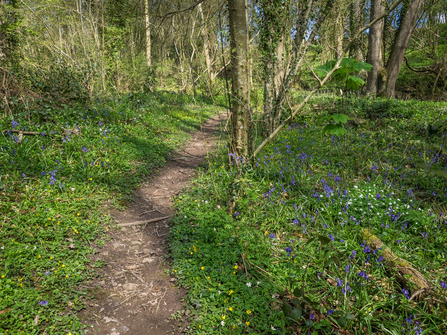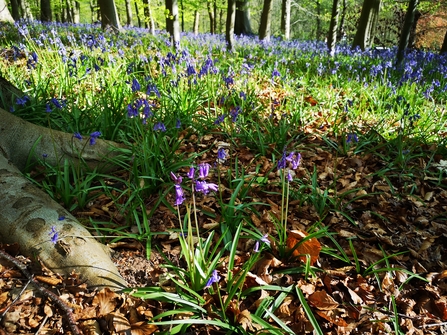
Luke Massey/2020VISION
Where to see bluebells
The appearance of bluebells in our ancient woods is a welcome sign Spring is in full swing. In the dappled shade of the woodland floor, these iconic flowers become a patchwork of light and dark blue with hints of violet. Did you know the UK is home to more than half of the world’s bluebells!
Holywell Dingle
Close to Eardisley, Holywell Dingle is a magical narrow dingle where the yellow celandines and wood anemones of early spring are followed by bluebells in late April. Take the circular path by the highly oxygenated waters of the Holywell brook, home to a variety of aquatic life including caddisfly and mayfly larvae. As you ascend the steep-sided valley with views through the trees to the bottom, see if you can spot a treecreeper or nuthatch on the trunks of the larger trees.

Holywell Dingle nature reserve bluebells (c) Peter & Lin Wyles
Nupend Wood with Lea & Paget's Wood
On the ridge above Fownhope, these two ancient broadleaf woods have large and spectacular drifts of bluebells. In Nupend Wood bluebells grow on the lower slopes alongside early purple orchid, yellow archangel and violets, while in nearby Lea & Pagets Wood ramson with their clusters of starlike white flowers accompany the bluebells. Connected by the Wye Valley Walk and only a couple of miles apart, it’s worth visiting both if time allows.
Queenswood Country Park & Arboretum
The extensive woods at Queenswood Country Park are a perfect place to spot bluebells from mid-April onwards. There’s so much to see at this time of year. The Arboretum has an extensive collection of flowering trees – the white and pink of cherry blossom, magnificent magnolia specimens and delicate leaved Japanese acers. Children will love roaming the woods and exploring the adventure playground.

Bluebells, Queenswood Country Park & Arboretum
Titley Pool
In the west of Herefordshire, Titley Pool boasts a spectacular display of bluebells. Your senses are alive to the sea of blue, the honey scent of bluebells in flower and birds in full territorial song. All three woodland warblers – chiffchaff, blackcap and willow warbler – breed here.
Littley Coppice
Close to West Malvern, Littley Coppice is home to bluebells, primroses, yellow archangel and violets in Spring, all flowers typical of an ancient woodland. Once a coppiced woodland, the Trust continues the coppice regime at Littley, bringing light to the woodland floor and benefiting these spring flowers. It also provides a variety of habitats for small mammals and wildlife through the different ages of each coppice cycle.
Littley Coppice in Spring (c) Peter Gardner
